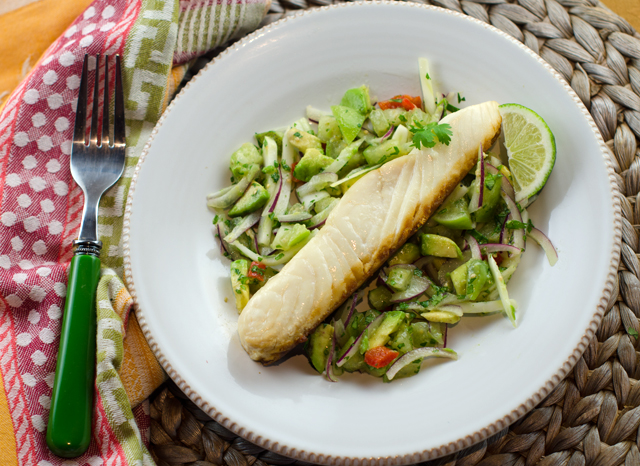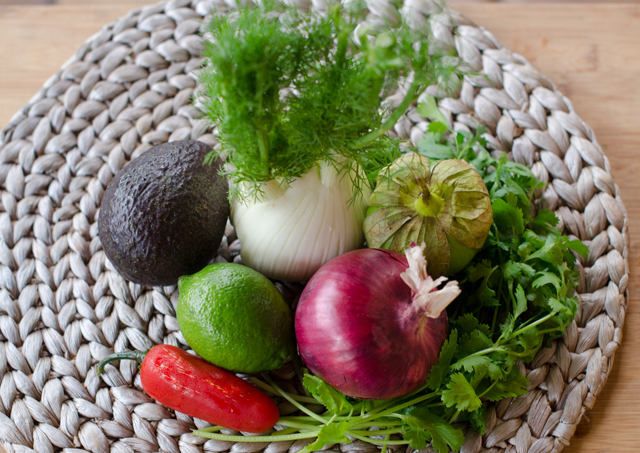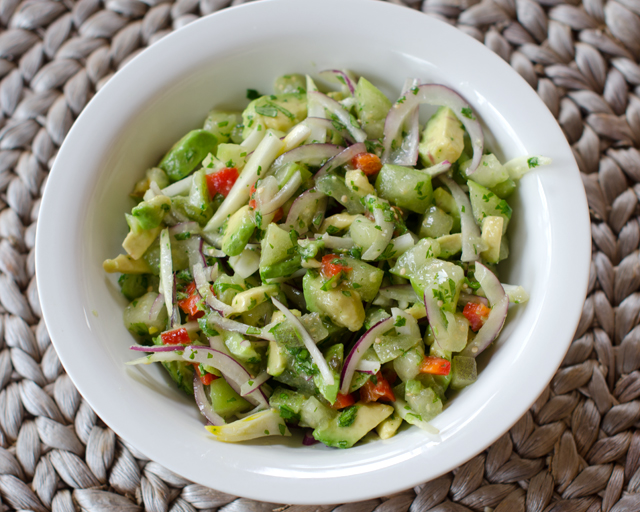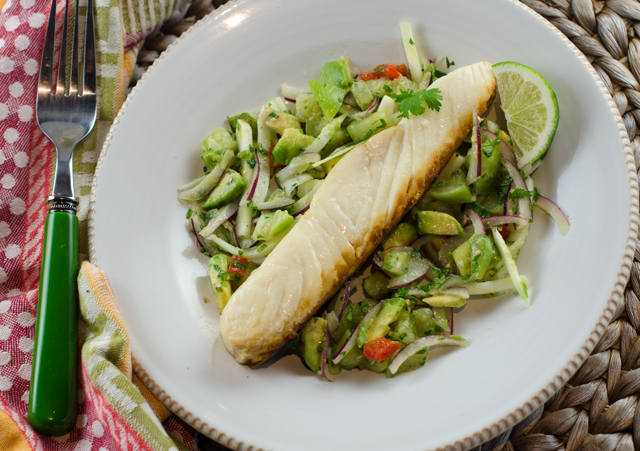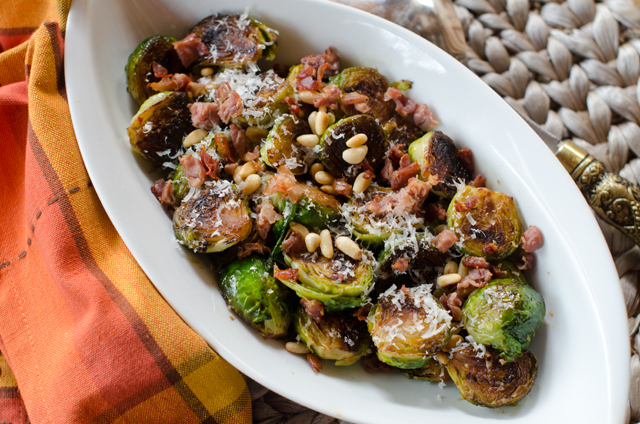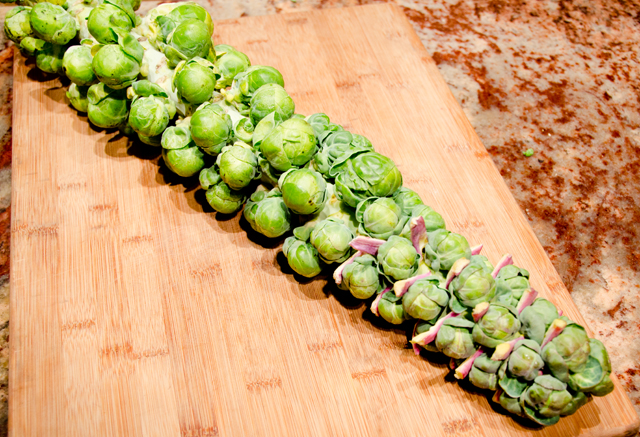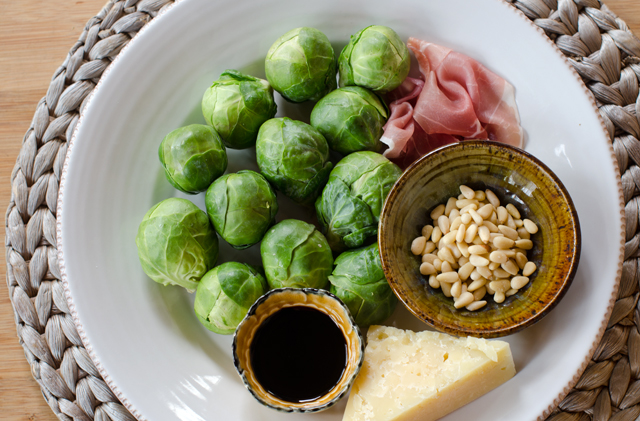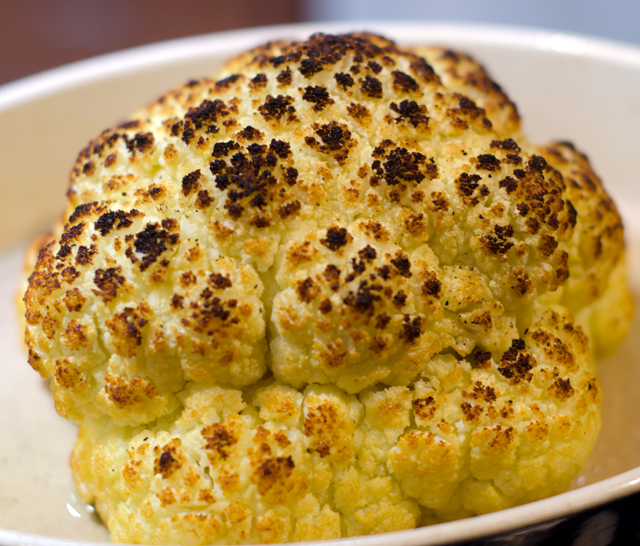 Is there any other vegetable as versatile as cauliflower? Puréed as a substitute for mashed potatoes, broken down into fine grains like rice, couscous and polenta, filling in as both pizza crust and tortilla, sometimes I think we forget how good it is without the disguises. I love to toss cauliflower florets with olive oil, salt and pepper and roast them until crispy brown on the outside and tender and creamy to the bite. A tray of roasted cauliflower sometimes doesn’t make it to the dinner table, we finish it off like popcorn. I shouldn’t leave out cauliflower “steaks”, thick slabs roasted in the same fashion as the florets and just as good. But the version that is visually impressive and surprisingly not that hard to do is whole roasted cauliflower. The internet has countless recipes for whole roasted cauliflower, most of the ones I read just baked the cauliflower. This one, from Israeli celebrity chef Eyal Shani in the latest issue of Milk Street Kitchen uses two techniques, poaching in well salted boiling water and then roasting at a high heat.
Is there any other vegetable as versatile as cauliflower? Puréed as a substitute for mashed potatoes, broken down into fine grains like rice, couscous and polenta, filling in as both pizza crust and tortilla, sometimes I think we forget how good it is without the disguises. I love to toss cauliflower florets with olive oil, salt and pepper and roast them until crispy brown on the outside and tender and creamy to the bite. A tray of roasted cauliflower sometimes doesn’t make it to the dinner table, we finish it off like popcorn. I shouldn’t leave out cauliflower “steaks”, thick slabs roasted in the same fashion as the florets and just as good. But the version that is visually impressive and surprisingly not that hard to do is whole roasted cauliflower. The internet has countless recipes for whole roasted cauliflower, most of the ones I read just baked the cauliflower. This one, from Israeli celebrity chef Eyal Shani in the latest issue of Milk Street Kitchen uses two techniques, poaching in well salted boiling water and then roasting at a high heat.
Prime season for cauliflower is in the fall and the ones available at farmers markets can be as large as 4-5 pounds. Out of season we depend on the wrapped varieties in our local supermarkets. Look for a cauliflower that weighs about two to two and half pounds. A larger head will be overcooked on the outside before it is tender on the inside. To begin the two step cooking process, get a large pot of water on to boil and preheat your oven to 475°F with the rack in the middle position.
While you are waiting for things to heat up, carefully trim off the leaves and the hard core near the bottom of the cauliflower. Leave the main stem intact and make sure not to cut through any of the florets. When the water has come to a rolling boil, add a half cup of kosher salt to the water. Carefully lower the cauliflower into the boiling water and immediately set a timer for five minutes. Since the cauliflower floats to the top, you will need to flip it halfway through the cooking process so it will cook evenly. When the timer goes off, transfer the cauliflower, stem side down to a colander. I found that a large Chinese strainer made this process easy. Allow the cauliflower to drain for at least ten minutes, you want the cauliflower to roast, not steam.
Transfer the cauliflower to a shallow sided baking dish, stem side down of course. Sprinkle with pepper or a pepper seasoning blend and rub with olive oil. Don’t neglect the bottom florets. Place the dish in the oven and bake, rotating the dish several times during the cooking process. This will allow for even browning. Tilting the pan with a potholder, use a small spoon to redistribute any olive oil that accumulates in the pan. The cauliflower is done when it is golden brown on the outside and the center is easily pierced with a skewer. Let cool for five minutes and serve right in the baking dish. Use a knife to cut into wedges. Delicious as is, or serve with your favorite dipping sauce.
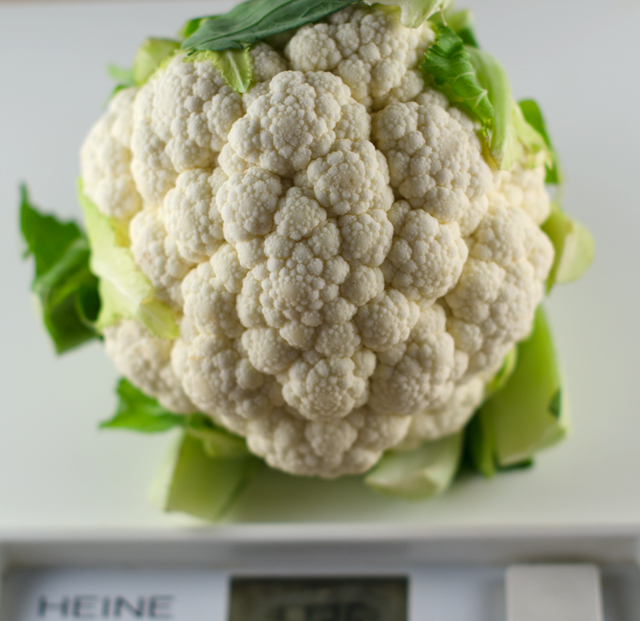
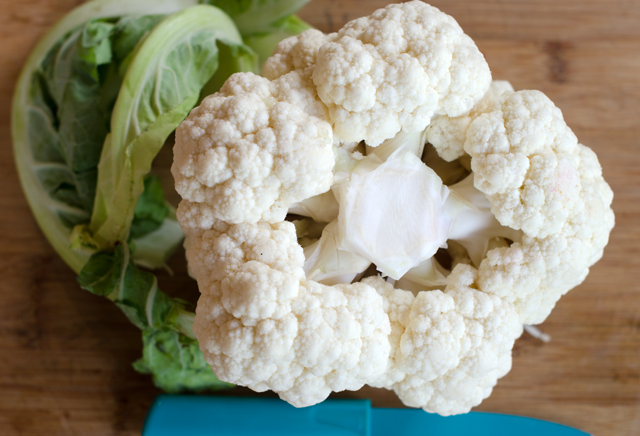
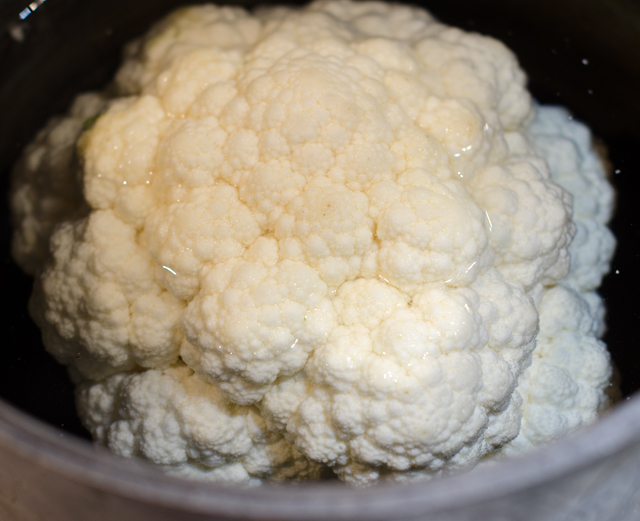
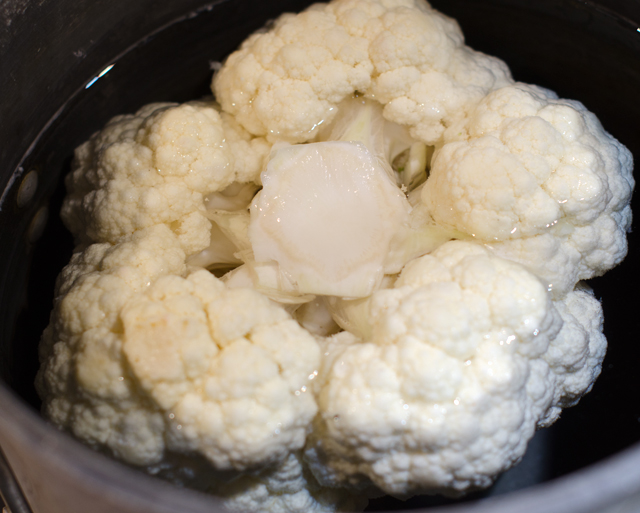
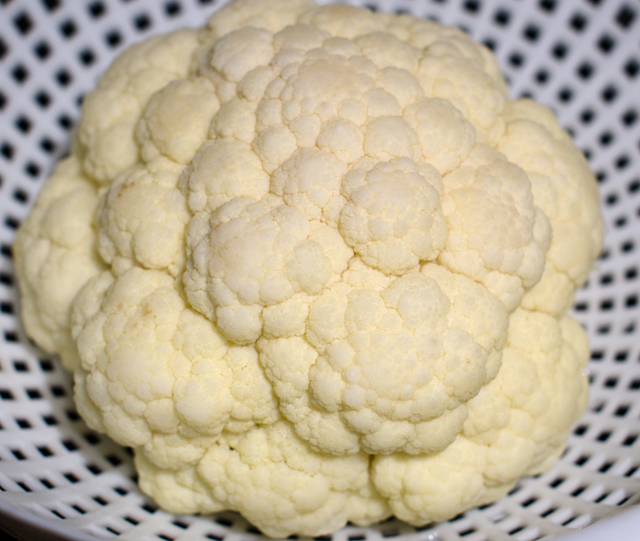
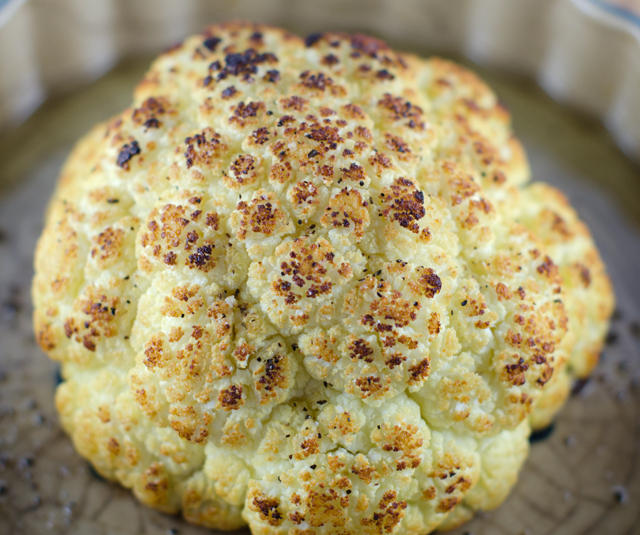
Whole Roasted Cauliflower
Serves two to four
Ingredients
- 2-pound cauliflower
- Kosher salt and fresh ground pepper
- 3-4 T extra virgin olive oil
Directions
- Preheat oven to 475°F with the rack in the middle position. In a 6 to 8 quart pot, bring 4 quarts of water to a rolling boil. While you are waiting for the water to boil, trim the green leaves and hard stem from the cauliflower. leaving the core and florets intact. Add a ½ cup of salt to the water and when it comes to a boil carefully lower the cauliflower into the water. Immediately set a timer for five minutes. Flip the cauliflower half way through the cooking process. Remove from heat.
- Transfer the cauliflower to a colander stem side down and drain for at least 10 minutes.
- Transfer the cauliflower to a shallow sided baking dish, stem side down.
- Drizzle with olive oil and use your hands to rub it in. Season with fresh ground pepper.
- Roast in the preheated oven, rotating the baking dish several times during the cooking process. Spoon oil that accumulates in the pan back over the cauliflower.
- Cauliflower is done when golden brown on the outside and a skewer can easily pierce the center, 20-25 minutes.
- Let rest for five minutes and serve in the baking dish.
